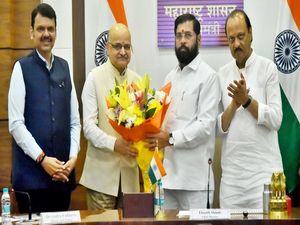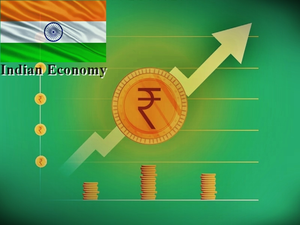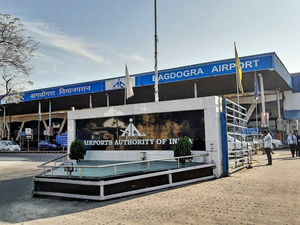Businesses
Adani Portfolio delivers robust growth, EBITDA reaches record Rs 82,917 crore in FY24
Ahmedabad, June 2 (IANS) Despite external volatilities and headwinds, the Adani Portfolio of companies has delivered strong and consistent growth in FY24 and the past five years, which signifies the strength and stability of its businesses, the company said on Sunday.
In FY24, the Adani Portfolio of companies delivered a record EBITDA growth of 45 per cent (year-on-year), reaching Rs 82,917 crore (approximately $10 billion), which is the highest in the history of the Adani Portfolio.
Cash profit or funds flow from operations (FFO) was at Rs 56,828 crore (nearly $6.7 billion), “registering a growth of 51 per cent year-on-year, owing to its disciplined investment strategy providing high conversion of EBITDA into cash profit”, said the company.
A strong asset base built over three decades now stands at Rs 478,137 crore (approximately $57 billion), higher by 16 per cent. The assets now serve a consumer base of over 350 million users, with a fast-growing consumer franchise across airports, electricity distribution, smart metering, gas distribution, and a direct-to-consumer digital platform.
“Equity deployed to total assets is highest ever at 62 per cent, against 55 per cent in FY23,” said the company.
It added that cash reserves are now at highest-ever levels of Rs 59,791 crore (approximately $7 billion), up by 48.5 per cent YoY.
The core infra and utility platform generated Rs 69,337 crore or 84 per cent of the total EBITDA in FY24.
Predictable cash flows led to multiple rating upgrades across portfolio companies.
Adani Ports and Special Economic Zone became the first large-scale Indian infrastructure company to be rated ‘AAA’.
Now, three listed portfolio companies — APSEZ, Ambuja Cement and ACC — have the highest INR rating of ‘AAA’. Additionally, there are two ‘AAA’ rated entities under AESL, namely Alipurduar Transmission and Western Transmission, the company said.
Currently, the Adani Portfolio debt profile represents a balanced exposure to domestic banking, global banking and capital markets. “Of the total debt mix, domestic banking exposure stands at 36 per cent and domestic capital markets at 5 per cent, whereas 26 per cent is the exposure to the global banking market; the global capital market is at 29 per cent and the balance 4 per cent is with others,” the company emphasised.
–IANS
na/vd
Businesses
NITI Aayog shares a $300 billion economy roadmap for Mumbai Metropolitan Region

Mumbai, Aug 22 (IANS) The NITI Aayog in its presentation to the Maharashtra government on Thursday suggested a roadmap for the Mumbai Metropolitan Region (MMR) to become a $300 billion economy by 2030 from the present $140 billion.
NITI Aayog CEO BVR Subrahmanyam during his meeting with Maharashtra Chief Minister Eknath Shinde and Deputy CMs Devendra Fadnavis and Ajit Pawar, suggested that the state can achieve this ambitious target with the promotion of MMR as global services’ hub, affordable housing and slum rehabilitation, tourism, port-proximate integrated manufacturing and logistics hub, planned urbanisation and intensive transport oriented development, sustainability projects and world-class urban infrastructure and transport.
NITI Aayog has said that the state government can attract a private investment of $125-135 billion, incremental GDP growth of $130-150 billion and additional capital by the state government of the order of Rs 50,000 crore over 5-6 years to chase the goal of making MMR a $300 billion economy.
“MMR is a $140 billion economy across 5 districts and covering 9 municipal corporations with a 25.8 million population and 10 million jobs. Good news is that MMR is on a positive growth trajectory on the back of $50 billion ongoing infrastructure investments. Our vision is to grow MMR into a $300 billion economy by 2030 and $1.5 trillion economy by 2047,” said Subrahmanyam in the presentation.
According to NITI Aayog, MMR has a potential to become a global services hub due to the existing two world-class business districts, Wadala and BKC for financial services and after the development of Navi Mumbai Aerocity as a global aviation city.
It has suggested that the rehabilitation of 2.2 million slums will create new housing stocks in addition to around 1 million affordable housing for low income and middle income group segments.
NITI Aayog has suggested the state can promote two themed tourism development hubs at Gorai and Madh and Alibaug and implement a masterplan for a 300 km coastline.
Further, the MMR can promote port proximate integrated manufacturing and logistic hub with the development of Kharbav integrated logistic cluster as a multi-modal logistic park, circular economy parks and electronic manufacturing and manufacturing cluster for white goods assembly at Khalapur-Panvel section.
In the wake of the development of Rs 76,000 crore Vadhavan port, NITI Aayog has suggested that it can be exploited for the promotion of green hydrogen, steel, chemicals, integrated textiles and apparels.
Further, the NITI Aayog has suggested that the government should release a slew of policies for services, tourism, affordable housing, and transport-oriented development. In addition, the government will have to craft investment promotion and land allocation policy, simplified and enabling urban planning policies, women-inclusivity blueprint and Green MMR policy.
Chief Minister Eknath Shinde has said that the government is focusing on the construction of affordable housing, development of a data center in Navi Mumbai, and completion of Alibaug Multimodal Corridor. Recently, the state government has cleared projects with an investment of Rs 80,000 crore. The government has stepped up efforts to promote tourism along the 720 km coastline.
(Sanjay Jog can be contacted at sanjay.j@ians.in)
–IANS
sj/pgh
Businesses
Finance Ministry sees food inflation easing further on back of better monsoon

New Delhi, Aug 22 (IANS) Inflationary pressures in the Indian economy eased in July and food inflation is expected to come down further with this year’s better monsoon leading to higher agricultural production, according to the Finance Ministry’s monthly review released on Thursday.
Retail inflation based on the Consumer Price Index eased from 5.1 per cent in June 2024 to 3.5 per cent in July 2024, the lowest since September 2019.
This was mainly due to a significant fall in food inflation. It declined to 5.4 per cent in July 2024 from 9.4 per cent in June 2024, the review states.
The substantial fall witnessed in food inflation was helped majorly by a decline in vegetable inflation from 29.3 per cent in June 2024 to 6.8 per cent in July 2024 and mild deflation in ‘oils and fats’ and spices.
On the other hand, core inflation (which excludes food and fuel) was at a moderate level of 3.3 per cent in July 2024.
Overall, the retail inflation rate moderated to 4.6 per cent in the first four months of FY25 as compared to 5.3 per cent in FY24 (April-July), according to the review.
With moderate core inflation and positive progress in the monsoon, the headline inflation outlook is positive. Assuming a normal monsoon, CPI inflation for FY25 is projected at 4.5 per cent by the RBI, with Q2 inflation at 4.4 per cent.
A steady progress in the southwest monsoon has supported agricultural activity. The cumulative southwest monsoon rainfall was 3 per cent higher than the long-period average up to August 19, 2024. Further, the spatial distribution has improved, with 84 per cent of subdivisions receiving normal or excess rainfall. This has enabled healthy Kharif sowing.
As of August 16, the actual sowing area under total foodgrains was 4.8 per cent higher than the corresponding period of the previous year, while progress in cereals and pulses was 4.6 per cent and 5.7 per cent higher than the previous year.
Corresponding to healthy progress in monsoon, availability of water level in reservoirs improving, ensuring water adequacy for irrigation during current Kharif and upcoming rabi crop production. The storage availability in 150 reservoirs as of August 15, was 111 per cent of the corresponding period of last year and 114 per cent of the average storage of the last ten years, according to the Central Water Commission. This augurs well for healthy food production that will aid in cooling food inflation in the upcoming months. Further, to enhance productivity and resilience in the agriculture sector, various measures have been announced in the Union Budget FY25, the Finance Ministry said.
–IANS
sps/vd
Businesses
Indian economy is on upswing: Finance Ministry

New Delhi, Aug 22 (IANS) The Indian economy experienced a notable upswing across various economic indicators in July 2024, signalling strong and resilient business activities with both the manufacturing and services sectors posting a robust performance, according to the Finance Ministry’s monthly review released on Thursday.
“The month saw impressive milestones being reached, substantial growth in GST collections, and a significant rise in e-way bill generation, which points to an overall increase in economic activity. The stock market indices also reached record highs in July,” the review states.
On balance, India’s economic momentum remains intact. Despite a somewhat erratic monsoon, reservoirs have been replenished. Manufacturing and services sectors are expanding, going by the Purchasing Managers’ indices. Tax collections – especially indirect taxes, which reflect transactions – are growing healthily, and so is bank credit, according to the review.
Inflation is moderating, and exports of both goods and services are doing better than they did last year. Stock markets are holding on to their levels. Foreign direct investment is looking up as gross inflows are rising, the review states.
Gross GST collections for July 2024 maintained their momentum, achieving their second-highest level since May 2023. The total gross GST revenue rose by 10.3 per cent year-on-year (YoY), bringing the total for FY 25 (April to July) to Rs 7.4 lakh crore.
This increase in GST collections also highlights robust compliance and expansion of GST coverage across various economic activities.
The upward level shift is reflected in the average monthly GST collections rising from Rs 1.68 lakh crore in FY24 to Rs 1.85 lakh crore in FY25.
The year-on-year increase in e-way bills reached a nine-month peak of 19.2 per cent with the total number of e-way bills issued in July surging to 10.5 crore, setting a new single-month record.
According to the review, the manufacturing sector has continued to demonstrate robust performance in the first four months of FY25, as evidenced by the strong performance of various high-frequency indicators.
The Purchasing Managers’ Index (PMI) Manufacturing, a crucial gauge of the economic vitality of the manufacturing sector, stood at 58.1 in July 2024, significantly above the series long-run average and among the highest recorded in recent years. This expansion, driven by buoyant demand conditions and a surge in production volumes, bodes well for the overall health of the economy.
Similarly, the service sector continued to perform well.
PMI services remained in an expansionary zone at 60.3 in July 2024, driven by expansion in international sales, an increase in new order uptakes, and a rise in new export orders.
Despite a rise in wages and material costs which pushed up business expenses, overall sentiment in the services sector remains upbeat, driven, among others, by an upswing in the tourism cum hotel industry induced by leisure travel, business travel, and social events, the Finance Ministry said.
–IANS
sps/pgh
Businesses
Sensex closes 147 pts up 81,053, Nifty above 24,800

Mumbai, Aug 22 (IANS) Indian stock markets again closed higher on Thursday due to positive sentiment in the markets.
At closing, Sensex was up 147 points, or 0.18 per cent, at 81,053 and Nifty was up 41 points or 0.17 per cent at 24,811.
The market’s positive sentiment was bolstered by optimistic global cues, particularly from the US markets, where the S&P 500 extended its winning streak, reflecting investor confidence amid expectations of potential interest rate cuts by the Federal Reserve.
During the day, Sensex traded in the range of 80,954 to 81,236 and Nifty traded in the range of 24,784 to 24,867.
In the Sensex pack, Bharti Airtel, Tata Steel, ICICI Bank, Titan, Asian Paints, UltraTech Cement, JSW Steel, Maruti Suzuki and SBI were the top gainers. Tata Motors, M&M, Wipro, NTPC, TCS, Power Grid, Sun Pharma, Axis Bank, and Nestle are the top losers.
Thursday’s market rally was led by Nifty Bank which settled up 300 points or 0.59 per cent at 50,985.
Among the sectoral indices, PSU Bank, fin service, FMCG, metal, realty and Private bank were the major gainers. Pharma, IT and energy were the major laggards.
An upward trend was also seen in small and medium stocks in the trading session. The Nifty midcap 100 index was up 400 points or 0.69 per cent at 58,844 and the Nifty smallcap 100 index was at 19,099, up 32 points or 0.17 per cent.
According to market experts, the domestic market witnessed modest gains owing to positive global sentiments.
“Particularly, the recent signs of weakness in the US non-farm payroll data have strengthened the case for potential interest rate cuts in September. However, in the broader market, investors are being cautious, opting for a selective approach, awaiting more clarity from central bank leaders in Japan and the US,” they added.
–IANS
avs/vd
Businesses
Centre aligns projects for civil enclaves at Bagdogra, Bihta airports with National Master Plan

New Delhi, Aug 22 (IANS) The Network Planning Group (NPG) has evaluated two projects of the Ministry of Civil Aviation for the construction of new civil enclaves at Bagdogra Airport in West Bengal’s Siliguri and Bihta Airport in Bihar’s Patna for their alignment under the PM GatiShakti National Master Plan initiative, the Commerce and Industry Ministry said on Thursday.
The two projects, to come up at a total cost of Rs 2,962 crore, were approved at a meeting of the Cabinet Committee of Economic Affairs last week.
The brownfield project at Bagdogra Airport, in the Darjeeling district of West Bengal involves the development of a new civil enclave with an investment of Rs1,549 crore. The expansion includes constructing a new terminal building with a capacity to handle 10 million passengers annually and an apron for 10 aircraft. Located strategically in the “chicken neck” area, Bagdogra Airport serves as a critical gateway to the northeastern region of the country, and this expansion is essential for meeting the region’s growing connectivity needs.
Similarly, the brownfield project in Bihar involves the development of a new civil enclave at Bihta Airfield, 28 km from Jay Prakash Narayan International Airport in Patna for Rs1,413 crore. This project addresses capacity constraints at Patna Airport and includes a new terminal building capable of handling 5 million passengers annually. The project also involves a 10-bay apron for A-321 aircraft, with the aim of accommodating growing passenger traffic and improving connectivity in the region.
The NPG also took up for discussion the project of the development of a Multi-Modal Logistics Park (MMLP) in Maharashtra’s Nashik to be built across an area of 109.97 acres. This greenfield project is designed to integrate road and rail transport, improving logistics efficiency, reducing costs, and supporting regional industries by providing facilities such as cargo consolidation, storage, and customs clearance. The project is anticipated to handle 3.11 million metric tons of cargo annually from 2029 onwards.
Besides, the NPG meeting evaluated the proposal for a strategic road upgrade in Assam to a 4-lane NH-17, covering a 44.56 km stretch between Chirakuta (Bilasipara) and Tulungia was also evaluated at the NPG meeting. This project will enhance regional connectivity, linking Assam to West Bengal, Meghalaya, and important infrastructure such as the Multi-Modal Logistics Park at Jogighopa and Rupsi and Guwahati Airports. It is expected to significantly boost economic activities, reduce travel time, and alleviate congestion in the region.
NPG evaluated the projects from the perspective of the principles of PM GatiShakti: integrated development of multimodal infrastructure, last-mile connectivity to economic and social nodes, intermodal connectivity, and synchronised implementation of projects. The projects are expected to play pivotal roles in nation-building, integrating various modes of transport, and providing substantial socio-economic benefits and ease of living, thereby contributing to the overall development of the regions, the official statement added.
–IANS
sps/dpb
-
Video1 year ago
PM Modi Attacks Congress in Karnataka with “Kerala Story”
-
Cricket1 year ago
CSK players rejoice 5th IPL title with their families (Pics)
-
Politics1 year ago
Siddaramaiah & DK Shivakumar sworn in as Chief Minister & Deputy CM respectively
-
Entertainment1 year ago
Karan Deol weds his longtime Girlfriend Drisha Acharya (Pics)
-
Entertainment1 year ago
Urvashi Rautela dazzles on Cannes 2023 red carpet (Pics)
-
Entertainment1 year ago
Sunny Leone gets ready for Kennedy premiere in Cannes (Pics)
-
Entertainment1 year ago
Alia Bhatt looks crazy beautiful in Prabal Gurung creation at MET GALA 2023 (Pics)
-
Sports6 years ago
History Of Official FIFA WORLD CUP Match balls































